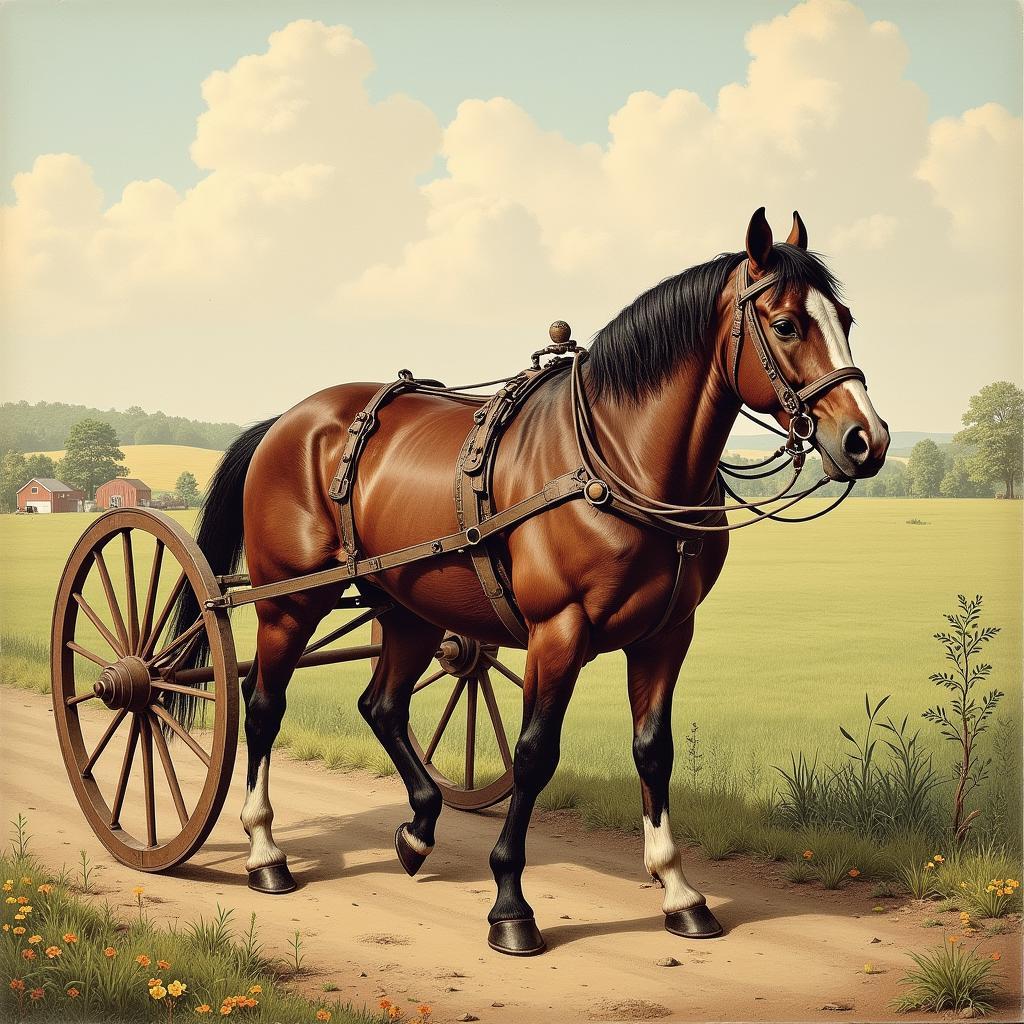The Gilbert White Harness Horse, a name that echoes through the annals of equine history, evokes images of strength, grace, and unwavering dedication. This article delves into the captivating world of this remarkable breed, exploring its origins, characteristics, and enduring legacy.
Delving into the History of the Gilbert White Harness Horse
The Gilbert White Harness Horse isn’t a recognized breed in the modern sense. The name “Gilbert White” likely refers to the renowned 18th-century naturalist, Gilbert White, known for his detailed observations of the natural world, including the animals in his native Selborne, Hampshire, England. It’s possible the term “Gilbert White Harness Horse” was used colloquially in his time to describe a specific type of horse commonly used for harness work in his area. These horses would likely have been strong, sturdy animals, well-suited for pulling carriages and farm equipment.
Characteristics of Harness Horses in Gilbert White’s Era
Harness horses of the 18th century, the type Gilbert White would have been familiar with, differed considerably from modern breeds. They were often heavier and more powerfully built than riding horses, prioritizing strength and stamina for agricultural work and transportation. Common breeds used for harness work included Shire horses, Suffolk Punches, and Clydesdales. These breeds were known for their calm temperaments, making them reliable and safe in harness.
 18th Century Harness Horse Working on a Farm
18th Century Harness Horse Working on a Farm
The Importance of Harness Horses in 18th Century England
Horses played a crucial role in 18th-century England. They were the primary mode of transportation, both for people and goods. Harness horses were essential for powering stagecoaches, carriages, and wagons, connecting towns and cities across the country. They were also vital for agricultural work, plowing fields, and transporting harvests. The economic and social fabric of the era relied heavily on the power and reliability of these animals.
What Might a “Gilbert White Harness Horse” Have Looked Like?
While we don’t have a precise image of a specific “Gilbert White Harness Horse,” we can infer its likely characteristics based on the horses common in his time and region. It likely would have been a medium to large-sized horse, with a robust build and strong legs. Its coat color could have varied, but common colors of the time included bay, brown, black, and chestnut. The horse would have been trained specifically for harness work, emphasizing obedience and responsiveness to commands.
What Breeds Might a “Gilbert White Harness Horse” Have Been?
It’s plausible that a “Gilbert White Harness Horse” could have been a local type or a crossbred, possibly involving breeds like the Cleveland Bay, a popular carriage horse, or even heavier breeds like the Shire. Given the prevalence of agricultural work, a sturdy build would have been essential.
The Legacy of Working Horses
Though the specific “Gilbert White Harness Horse” may remain a mystery, its symbolic representation of the working horses of the 18th century is significant. These animals were the backbone of the economy and daily life, shaping the landscape and connecting communities. Their legacy reminds us of the vital role horses have played throughout history.
Conclusion
The Gilbert White Harness Horse, while not a formally recognized breed, offers a fascinating glimpse into the equine landscape of 18th-century England. By understanding the types of horses used for harness work during Gilbert White’s time, we can appreciate the vital role these animals played in shaping the era. Their strength, reliability, and dedication were essential to the economic and social fabric of the time, leaving a lasting legacy on our understanding of equine history.
FAQs
- Was the Gilbert White Harness Horse a specific breed? No, it likely referred to a type of horse used for harness work in Gilbert White’s area.
- What breeds were commonly used for harness work in the 18th century? Shire horses, Suffolk Punches, and Clydesdales were common.
- What was the importance of harness horses in Gilbert White’s time? They were crucial for transportation and agricultural work.
- What might a “Gilbert White Harness Horse” have looked like? It likely would have been a medium to large-sized horse with a robust build.
- What is the legacy of working horses? They were the backbone of the 18th-century economy and daily life.
For more information about horse care and other related topics, please explore other articles on our website. Need expert advice? Contact us at Phone Number: 0772127271, Email: [email protected] or visit us at QGM2+WX2, Vị Trung, Vị Thuỷ, Hậu Giang, Việt Nam. We have a 24/7 customer service team.